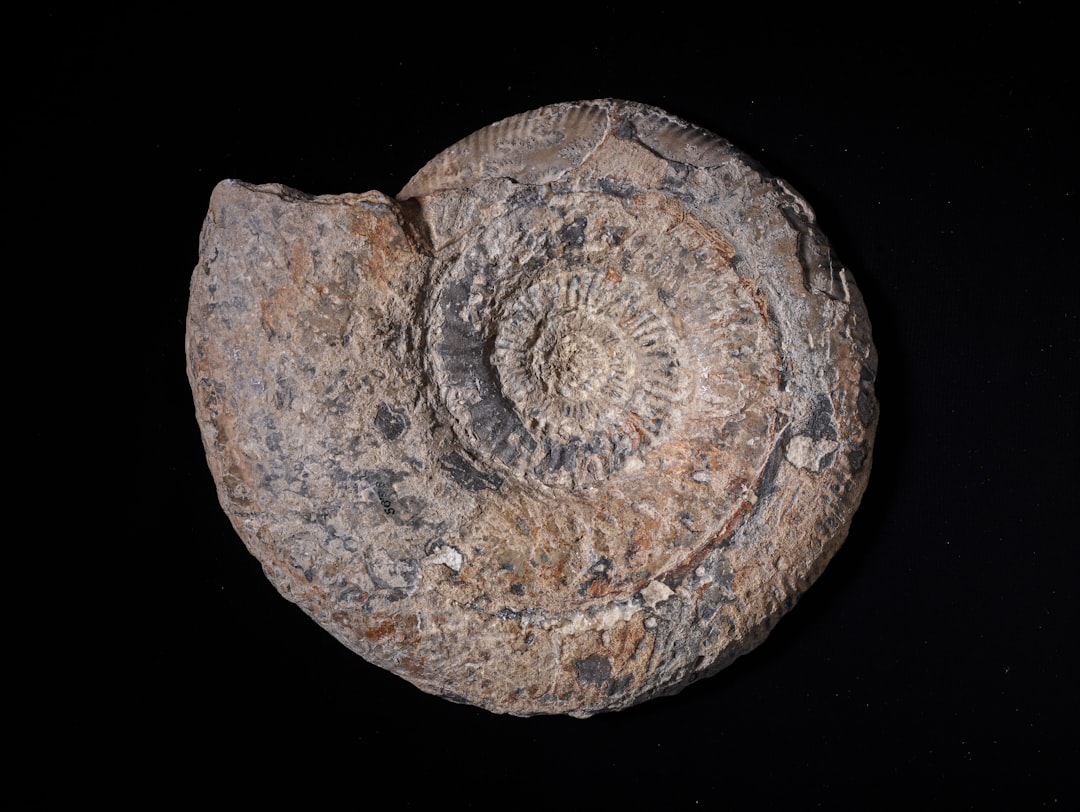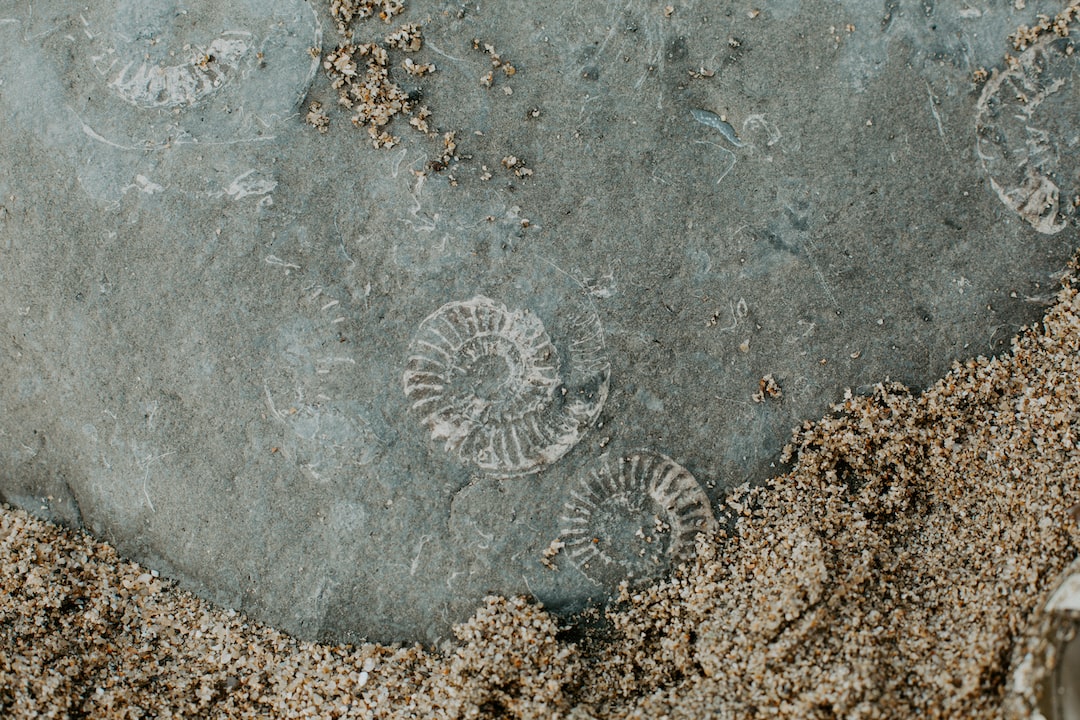Overview of Fossils
Fossils, as the preserved remains or traces of ancient animals and plants, offer a compelling glimpse into Earth's history and the evolution of life. These remnants, ranging from bones and shells to feathers and leaves, provide valuable insights into the biological and environmental landscapes of the past. The process of fossilization, which is rare and requires specific conditions, is essential for the formation of these remarkable artifacts. Fossils can originate from a variety of geological eras, spanning from the Archaean Eon to the Holocene Epoch, and can be found in almost every environment, from deserts to jungles.
Fossils are not merely static remnants of the past; they are windows into a world that once existed, offering invaluable information about the evolution, interactions, and ecological dynamics of ancient organisms. The diversity and richness of Australia's fossil record serve as a testament to the country's vibrant natural history and contribute to our understanding of the broader narrative of life on Earth.
The Fossilization Process
Fossilization is a remarkable and rare process that occurs when the remains of ancient organisms are preserved in sediment. This preservation is crucial, as it prevents the decomposition of the remains and allows them to become fossils. The rarity of fossilization is due to the specific conditions required for the process to take place. For example, the remains need to be rapidly covered by sediment soon after death to prevent decay, which protects the organic material from being destroyed by natural elements such as scavengers and environmental factors. This rapid burial is vital for the subsequent transformation of the remains into fossils.
In addition to the formation of body fossils, the fossilization process can also result in trace fossils, which are records of biological activity such as footprints, burrows, and coprolites. These traces offer insights into the behavior and interactions of ancient organisms, providing valuable information about their ecological roles and environmental conditions.
For instance, the Ediacara biota, a group of early complex organisms that lived during the Ediacaran Period, is known primarily from trace fossils. These trace fossils provide evidence of the diverse range of organisms that existed during this ancient period and offer clues about their behaviors and interactions with the environment. Therefore, the fossilization process not only preserves the physical remnants of ancient life but also captures the behaviors and ecological dynamics of past ecosystems, contributing to our understanding of Earth's history and the evolution of life.
The fossilization process is an intricate and multifaceted phenomenon that has shaped our understanding of ancient life forms and the environmental conditions that influenced their preservation. By examining the processes and outcomes of fossilization, we can gain deeper insights into the complex interplay between geological, biological, and ecological factors that have contributed to the formation of fossils.
Identifying Authentic Fossils
One way to identify genuine fossils is by examining their specific characteristics. For instance, mineralized fossils are formed when organic matter in remains is gradually replaced with minerals, resulting in a distinct appearance that reflects the natural fossilization process. This mineralization often creates unique patterns and textures that are indicative of authentic fossils. Additionally, genuine fossils may exhibit signs of their ancient origins, such as the presence of sediment or rock matrix adhering to the specimen, further validating their authenticity.
It's also crucial to be cautious of repaired fossils when making a purchase. Repaired fossils are specimens that have undergone alterations or enhancements, which can affect their scientific and aesthetic value. These modifications may involve the addition of artificial materials or the filling of cracks and gaps in the fossil, potentially misleading buyers about the true nature of the specimen. To ensure the authenticity of fossils, it is recommended to buy from reputable sellers or online platforms with a history of providing ethically sourced and genuine specimens, thereby reducing the risk of acquiring altered or misrepresented fossils.
Moreover, understanding the different types of fossils and their distinctive features is essential for identifying genuine specimens. By familiarizing oneself with the characteristics of specific fossil types, such as trilobites, ammonites, or petrified wood, collectors and enthusiasts can develop a discerning eye for recognizing authentic fossils. This knowledge empowers individuals to make informed decisions when acquiring fossils and contributes to the preservation and appreciation of these historical remnants.
In summary, genuine fossils can be identified by examining the presence of mineralized remains, observing well-defined fossilization patterns, and comparing the characteristics of the specimen with known fossil types. Developing a deep understanding of these distinguishing factors is invaluable for ensuring the authenticity of fossils in the market and building a comprehensive fossil collection.
Fossil Exploration in Australia
Australia is a treasure trove of fossils, offering a fascinating glimpse into prehistoric life. The country's rich fossil record includes the remains of large extinct mammals, gigantic sea creatures, and diverse dinosaur species. Among the notable sites, Lightning Ridge in New South Wales is unique for its opalized fossils, including plant and animal remains. Richmond, once part of a large inland sea, reveals fossils of marine reptiles, fish, and dinosaurs. In Winton, the Australian Age of Dinosaurs showcases sauropod dinosaurs and footprints, while Eromanga's Natural History Museum displays ice age megafauna and sauropod dinosaurs. Additionally, Hughenden is renowned for ammonites and belemnites, with self-guided tours available to explore these ancient relics
Moreover, the Naracoorte Caves in South Australia have yielded a treasure trove of fossils, including the remains of megafauna such as giant kangaroos, marsupial lions, and wombats. These discoveries have not only enriched our understanding of the continent's ancient biodiversity but have also contributed to unraveling the mysteries of mass extinctions and environmental changes that occurred in Australia's history. The fossil deposits in the limestone caves have provided a remarkable record of the Pleistocene Epoch, showcasing the ecological dynamics and the evolutionary adaptations of the diverse species that once inhabited the region.
The exploration of these fossil sites plays a pivotal role in enhancing our knowledge of Australia's paleontological heritage and geological evolution. These discoveries also underscore the importance of preserving these sites for future generations, as they offer invaluable insights into the continent's ancient past and the processes that have shaped its distinct ecosystems. The significance of these findings extends beyond scientific inquiry, as they contribute to the cultural and historical narratives of Australia, fostering a deeper appreciation for the country's natural heritage.
Notable Fossils in Australia
Australia boasts a rich fossil record, with diverse and unique specimens found across the continent. For instance, the Ediacara Hills in South Australia are renowned for preserving the oldest known complex multicellular organisms, dating back approximately 550 million years. These fossils offer a window into the early stages of complex life on Earth, shedding light on the evolutionary transitions that occurred during this pivotal period.
In addition, the fossilized remains of the Diprotodon, the largest marsupial that ever lived, have been discovered in various locations across Australia. These colossal creatures roamed the continent during the Pleistocene epoch, and their fossils provide valuable information about the ancient megafauna that once inhabited the land. Through the examination of such fossils, scientists can piece together the ecological interactions and environmental conditions that influenced the evolution and eventual extinction of these remarkable animals. The significance of these fossils extends beyond their intrinsic scientific value, as they also contribute to the cultural and historical narratives of Australia, fostering a deeper appreciation for the country's natural heritage.
Scientific Importance of Fossils
Fossils play a crucial role in expanding our knowledge of Earth's history and the evolution of life. These preserved remains offer a wealth of information about the biological, ecological, and environmental conditions of ancient ecosystems, contributing to our understanding of the processes that have shaped the diversity of life on our planet.
For instance, the fossilized remains of trilobites found in Australia offer a glimpse into the diverse marine life that inhabited the region during the Paleozoic era, shedding light on the ecological landscape of that time. The study of these fossils provides critical insights into the morphological diversity, ecological interactions, and environmental adaptations of ancient marine organisms. By examining the fossilized remnants of trilobites, scientists can reconstruct the ecological dynamics of prehistoric oceans and gain a deeper understanding of the biological communities that thrived during this ancient period.
Moreover, the examination of fossils contributes significantly to our understanding of evolutionary processes. By tracing the changes in anatomical structures, behavior patterns, and ecological interactions across geological time, paleontologists can reconstruct the evolutionary history of various organisms. This knowledge is instrumental in constructing evolutionary timelines and recognizing the patterns of adaptation and extinction that have shaped life on Earth. Notably, the discovery of well-preserved fossilized leaves in Australia's ancient rainforests provides essential clues about the flora that flourished during prehistoric times, contributing to our understanding of plant evolution and ecological dynamics.
In essence, fossils serve as invaluable tools for piecing together the intricate narrative of biological evolution and ecological transformations throughout history. The scientific importance of fossils extends beyond their individual specimens, as they offer a compelling record of the ecological and biological changes that have unfolded over geological time.
Commercial Aspects of Fossils
The commercial aspects of fossils have stirred debates within the scientific community due to ethical considerations and their potential impact on paleontological research. The trade of fossils raises questions about the preservation of these historical remnants and their significance in understanding Earth's history.
One notable commercial application of fossils is their use in mineral exploration. Microfossils can serve as indicators of potential mineral and fuel deposits, aiding geologists in identifying the stratigraphic position of coal seams and other mineral resources. This demonstrates the practical significance of fossils beyond their scientific value, contributing to the exploration and extraction of essential natural resources. However, the utilization of fossils in this manner also raises concerns about the impact of commercial activities on fossil-rich sites and the need for responsible and sustainable practices in the extraction and study of these historical remnants.
Moreover, the commercial exploitation of fossils has implications for the conservation of paleontological sites and the ethical sourcing of these artifacts. This highlights the intricate balance between scientific exploration, commercial interests, and the preservation of fossil resources. The ethical considerations surrounding the commercial trade of fossils underscore the need for transparent and responsible practices to ensure the preservation of these invaluable historical remnants for future generations.
In conclusion, the commercial aspects of fossils encompass a complex interplay between scientific, commercial, and ethical considerations. The commercial exploitation of fossils not only influences paleontological research and conservation efforts but also extends to their role in mineral exploration. As such, a thoughtful and balanced approach is essential to navigating the intricate relationship between the commercial use of fossils and their scientific and historical significance.
 Impactful Fossil Discoveries
Impactful Fossil Discoveries
The impact of fossil discoveries on our understanding of prehistoric life and Earth's history cannot be overstated. For instance, the Himalayas, one of the highest mountain ranges globally, have yielded remarkable fossil finds that provide crucial insights into ancient biodiversity and geological events. Fossils discovered in this region have revealed the presence of ancient marine organisms at elevations that were once underwater, shedding light on the tectonic forces that uplifted these mountains over millions of years.
Similarly, the landlocked U.S. state of Utah has been a treasure trove of significant fossil discoveries, offering glimpses into diverse prehistoric environments and the evolution of life on Earth. Notably, Utah's fossil sites have yielded well-preserved remains of dinosaurs, ancient mammals, and early plant life, enabling scientists to reconstruct ecosystems from millions of years ago. These discoveries have contributed to our understanding of evolutionary processes and the environmental conditions that shaped ancient life forms.
Furthermore, the pioneering work of individuals like Mary Anning, a 19th-century British fossil collector, has been instrumental in advancing paleontological research. Anning's remarkable findings, including the first complete Ichthyosaurus skeleton, significantly expanded scientific knowledge of Jurassic life and paved the way for subsequent paleontological investigations. By unearthing and documenting these invaluable specimens, Anning made enduring contributions to the understanding of prehistoric organisms and their habitats, leaving an indelible mark on the field of paleontology.
The impact of these fossil discoveries extends beyond scientific inquiry, as they offer a compelling insight into the ecological, geological, and biological changes that have shaped the Earth's history. By continuing to explore and unearth new fossil treasures, we are presented with endless opportunities to expand our knowledge of the natural world and appreciate the wondrous complexity of life throughout history.
Eclectic Gems and Minerals, Fossils Range
Eclectic Gems and Minerals is renowned for its extensive collection of fossils, which encompasses a wide array of specimens from different geological eras. Eclectic Gems is proud to have supported both local and international universities with a diverse range of mineral and fossil specimens, aiding in their important research endeavors. We warmly invite educational institutions, including universities and schools, to contact us for assistance. Our team is committed to contributing to academic pursuits and will be delighted to help wherever possible.
The range includes fossils such as trilobites, ammonites, petrified wood, and dinosaur teeth, each offering a glimpse into Earth's ancient history. For example, the collection features well-preserved trilobite fossils, which are arthropods that existed over 250 million years ago and are known for their intricate exoskeletons and diverse species. These fossils serve as invaluable records of prehistoric marine life, allowing enthusiasts to appreciate the complexity of ancient ecosystems and the evolution of marine organisms.
Moreover, the collection includes petrified wood specimens, which have undergone the process of permineralization, where organic material is gradually replaced by minerals, resulting in the formation of stone-like fossils. These petrified wood fossils offer a window into the ancient forests that once dominated different regions of the world, providing insights into the plant life of bygone eras. Additionally, the assemblage of dinosaur teeth available at Eclectic Gems and Minerals offers a tangible connection to the Mesozoic Era, allowing collectors to marvel at the remains of these magnificent creatures that roamed the Earth millions of years ago. The diverse range of fossils at Eclectic Gems and Minerals provides a unique opportunity for enthusiasts to delve into the fascinating world of paleontology and gain a deeper understanding of the geological and biological history of our planet.
The extensive collection of fossils at Eclectic Gems and Minerals offers a diverse range of specimens that cater to both seasoned collectors and enthusiasts seeking to embark on a journey into the ancient past. The availability of such fossils not only provides educational and recreational opportunities but also contributes to the preservation and appreciation of Earth's natural history.
Concluding Remarks
In conclusion, fossils are not mere remnants of the past; they are invaluable storytellers that offer a compelling narrative of Earth's history and the evolution of life. The study and exploration of fossils provide critical insights into the biological, ecological, and environmental changes that have shaped the planet over geological time. From the remarkable discoveries in Australia's fossil-rich landscapes to the pivotal role of fossils in mineral exploration and scientific research, these ancient remnants continue to captivate and inspire our understanding of the natural world.
As we continue to unravel the mysteries of prehistoric life through fossil discoveries, we are presented with endless opportunities to expand our knowledge and appreciation of the Earth's rich and dynamic history. The diverse and extensive range of fossils available at sources like Eclectic Gems and Minerals further facilitates this exploration, offering enthusiasts a tangible connection to Earth's ancient past and the remarkable organisms that once inhabited the planet. Through the preservation and study of fossils, we can continue to uncover the intricate tapestry of life on Earth and gain a deeper appreciation for the wondrous complexities of our planet's natural history.


